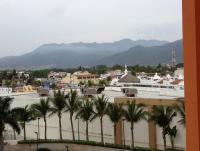Search the Community
Showing results for 'revision'.
Found 17,501 results
-
Here's a link to an article about a recent study done on bypass revisions to the band: http://slimband.com/gastric-banding-achieves-weight-loss
-


⭐Review of Revisions to RNY
GreenTealael replied to GreenTealael's topic in Revision Weight Loss Surgery Forums (NEW!)
*I'M NOT A SURGEON* But it appears the sleeve was separated into 2 sections (1 connected to the esophagus/ 1 connected to the duodenum) but also then the Surgeon decided to resect more of the sleeve (connected to the esophagus) to get the proper shape and size for the revision. This person may have had a longer stomach than usually, or this may be common practice. I sure wish sometimes that we had a resident surgeon on the site to ask questions... -
6/28: I'm in control of what I can control... So very very true. I need to be revised to RNY for GERD. At first I was was shocked, then all for it, then felt like it was totally my fault but testing confirmed it was nothing i could have done to prevent it. So far im totally just rolling with it until its a reality. It feels surreal for sure. Especially doing a 2 week preop diet while being at goal 😭 but ... C'est la vie 6/29: My past doesn't define me, but helps me remember the future I'm fighting for 6/30: June has been a whirlwind for me, not necessarily bad but definitely filled with some... moments I'll never forget I truly appreciate you @Cheeseburgh for throwing an amazing party in here... the Skalender tried to kill us in the end 😭😂 🙌🙌🙌🙌🙌🙌🙌🙌🙌🙌🙌🙌🙌🙌🙌🙌🙌🙌🙌
-


Is there no one over 70 who has been sleeved?!
Hevnbound replied to Hevnbound's topic in Gastric Sleeve Surgery Forums
Karen - with an attitude like yours, you will do well! I would imagine a revision as you are going to have must be a little more invasive than just having the sleeve? All this means is that your pain issue might be a little worse? Just speculating here. So, after saying that I can say that I have apparently been an exception to the rule according to my surgeon. I have had no pain, no pain medicine, no nausea, etc! The only problem so far was my very raw throat. A raw throat is common after surgery because of the breathing tube they insert (I think that is what it was). It did a job on me. It was so bad that I literally did not sleep Monday night. I have sleep Apnea and because of my inflamed throat, the CPap machine wouldn't function properly on exhale - my throat would close up as the air blew across my throat! Hard to explain but bottom line, I was not able to sleep. The fact that I couldn't sleep on my side made the problem worse. I am not complaining however since that is really the only "hiccup" I had. Meeting with your anesthesiologist is a good opportunity to discuss any fears you may have and to tell him in detail any issues you may have such as a bad reaction to anesthesia, sleeping/breathing problems, etc. PLUS, discuss the raw throat issue!! I am somewhat anal when it comes to Doctors orders - I follow the instructions to the letter. I was on a liquid diet for 4 weeks pre- surgery and never cheated. As a result I lost almost 40 pounds before I had surgery. When I tell you this, I am not bragging, I am saying that perhaps that made a big difference in my body's ability to tolerate surgery as well as it did. Post surgery will be no exception - I will follow the Doc's and the Nut's directions. Three days out, I have had no problem with my new/old stomach. I sip, take plenty of time and pay attention to what my stomach tells me. I continue to be serenaded by my stomach and bowels talking to me ... WOW! My wife thought it was thundering one time!! LOL That's all I have. I feel blessed. Sure I followed the doctor's orders (after all, he has done over 800 sleeve surgeries)!! However ... I don't discount the prayers sent up for me! I asked everyone I knew and some I didn't to pray for me! I will be praying for you, Karen. Let us hear from you. Truly, you sound like a fun person with a great attitude and that will take you a long ways. Sam -


Any 12/3 DS buddies out there. How are y’all doing
HamHockSkye posted a topic in Duodenal Switch Surgery Forum
Has my revision from banded bypass to DS in last Tuesday. Anybody else?? -


August Sleevers?! Where Ya's At?
emmmie replied to futureskinnypants's topic in Gastric Sleeve Surgery Forums
Hi All August Sleevers- I received my revision from Lap-Band (Aug 2010) to Sleeve on Aug 15th (a little late on the posting) at that time they also removed my gallbladder and repaired my hiatal hernia. Anyone who had surgery around then- how are you doing so far? I've actually had a good run so far and I am feeling great. -Emily -


Weight loss slower than anticipated
Smanky replied to mathiasinthe314's topic in Gastric Bypass Surgery Forums
You're losing much faster than I did (I averaged about 2 pounds/1kg per week), and I wasn't a revision patient. Just be patient and kind to yourself and stick to your plan and you'll get where you want to be. -


Weight loss slower than anticipated
summerset replied to mathiasinthe314's topic in Gastric Bypass Surgery Forums
Revision patients usually lose slower. -
I am July 12th having band to bypass revision. It will be great not to have indigestion every day x Sent from my SM-G928F using the BariatricPal App
-
I agree with this. At your starting weight you should have been offered a Duodenal Switch or a SADI procedure. If you weren't, I'm assuming it is because your surgeon can't perform those surgeries, so just offered you the sleeve? If you were offered these options, why did you opt for just the sleeve? My highest weight was 320. Two surgeons agreed I should have a traditional duodenal switch. I did the research and agreed with them, though originally I just wanted the sleeve. I was terrified of the switch portion of the surgery, especially because I've had ulcerations of the small intestines due to my autoimmune disease. So my surgeon called and consulted with my GI doctor and together they decided the DS was the best option for me and worth the risk because of how many benefits it would offer me. So I decided to accept my fear and go with the DS anyway. I'm so thankful I did and that it was an option offered to me. It has changed my life in so many ways for the better... The sleeve is the first part of a duodenal switch, that's where the sleeve operation actually came from. The intestinal part can be added at any stage by a surgeon qualified to do it, but only a small percentage of surgeons can perform it, as it can be rather complex. We see revisions from sleeve to DS all the time in my support group.
-


June 2009 Surgery
thebandedgirl replied to traviesa97's topic in PRE-Operation Weight Loss Surgery Q&A
I went in to get my first fill today and found out that my port is flipped on its side. They were able to do the fill and I may or may not have to have a revision; I'll see my surgeon in a month when my next fill is scheduled and he'll make the final decision. I had my surgery on 6/18 too, btw :Dancing_wub: -


Lap Band With Gastric Plication
hmarko replied to gingy's topic in Tell Your Weight Loss Surgery Story
Thanks gingy - the Water weight is starting to come off slowly (did you know a gallon of IV's weights 8 lbs LOL I have some tummy cramps - the gas factor is better this time around overall (I had the left shoulder thing for weeks the first time - its gone after days this time); my abs are better this time around though the pain the first night was horrendous as I mentioned. They may not have done anything w/ the port which means my abs won't be totally shot too - feels like it. I think i may be ready to be on mushies soon starting to feel hungrier (we do liquids for 10 days). YES if a month out w/ no fills (which you have not had yet if i recall) you are full it is totally the plication! COOL! That is what I figured would happen! Fascinating stuff. Yea mine was tougher cuz of the revision mainly as they have to deal w/ scar tissue and get rid of it so its more invasive. The hernia i had last time too; the liver biopsy was unrelated to this but a great oppty to get it for other issues I've had (that would cause some ouchiness and the plication itself which is the cramping you experienced and I'm having now - when does that stop???) Having said that it is Day 6 and I feel like i am reaching a turning point of less pain. -
How are you doing hon? Haven't heard from you in a day or two. Hope things are better with the pain. I am feeling much better from the plastics ands hopefully will get my stitches all out today except for the ear whear he is dong a minor revision today. Corliss
-


Should Revisioners Have a Different Post-Op Diet?
NukeChik posted a topic in Revision Weight Loss Surgery Forums (NEW!)
I had my band to sleeve revision on Sept 7, so I'm currently on Day 12. I am really concerned about the post op diet phase. I was given 2different set of instructions for my post op. One set was given to me pre-op and one set was given post-op. There are significant differences between the two, and it makes me wonder if different instructions should be followed for a revision. Thoughts? -


February 2022 Surgery Buddies
karenkeitt replied to MeganMyers's topic in PRE-Operation Weight Loss Surgery Q&A
Revision of gastric bypass done on 2/8 in Concord, North Carolina. Can’t wait for soft foods. -


I am scared to get GERD, please give me advice
AchieveGoals posted a topic in Gastric Sleeve Surgery Forums
Alright so, I'm a 29 year old female, I suffer from High Blood Pressure at this age (so upsetting), Diabetes. I have gone through the 6 month program at my clinic and I'm approved for surgery. My A1c is above 8 right now, so I'm just working on getting that lowered to ~8 at my next blood test, and I'm good to go to get sleeved. Now call me an idiot or a coward, but I am scared to get GERD after the surgery. I know, it sounds so stupid, for Christ's sake I have high blood pressure and Diabetes already, but I feel like if I go through something so drastic as to cut out 70% of my stomach, I just don't want to accumulate other diseases like GERD and still be bound to take medications everyday for other diseases acquired - does that make sense to anyone? I want to get this procedure done (And let me tell you, I am soo scared still to do it, but I know it is the best option for me considering my health status), I just feel like let's say I do get GERD, there is all this talk about sleevers down the line getting revisions, I don't wanna be a non-normal person getting surgeries and other procedures done all the time to feel normal. What advice can anyone give me to relieve my nerves? As of right now, I do sometimes get heart burn if I eat something spicy - i don't take any medications for it. I would say it happens 2-3 times a month. Is there a possibility I will get chronic GERD after surgery and I will need a revision done later on in life? Any advice would help me out!!! I'm a confused mess right now.... -


I am scared to get GERD, please give me advice
KadieEuropeBound replied to AchieveGoals's topic in Gastric Sleeve Surgery Forums
Prior to my VSG 2 years ago, my acid reflux was minimal, not everyday. I had experienced reflux when I gained weight. I was a yo-yo dieter for years getting low as 130lb to high of 310. At my pre op testing for surgery, my surgeon says I have mild gerd. He had recommended gastric bypass. I didn't want bypass and told him if I lose the weight the reflux should go away like it has done in previous years. I was reflux free for 1 1/2 years post VSG. By then, i was 100 pounds lighter. By Dec of last year, I started having reflux here and there but not everyday. The ppi medicine was working but fast forward to this year. I was still experiencing mild acid in my esophagus after eating even with taking a ppi using with nutrition dense foods. My surgeon again recommended gastric bypass to get rid of the acid reflux or stay on ppi forever. I was leaning towards staying on ppi medication and losing more weight. However, I am still reading those with gerd/VSG and have reached a healthy BMI under 25 still experienced gerd. I will be moving forward with revision surgery from VSG to Gastric Bypass on the 19th of Sept. -
Carlene: Don't you find that most youngsters like to jump in, make a short concise statement that sounds credible enough, and then jump back out again without explaining how or why they came to that conculsion? They don't seem to enjoy a good argument. I think that it may be due to the fact that they've accepted certain things that they've read or heard because they like the sound of them. Life experiences... that's the answer for old ladies like us. Oh yeah, and knowledge. Is this referring to my original post? I know that I haven't been on this thread lately, but that's because I've been busy on the overpopulation thread. Ok, since you want more facts, argument, and debate as to why I feel Bush is the worst US president in history, let's begin simply, with the environment: (As taken from articles by scientists and environmental watchdog groups I have compiled): Oil and Gas Drilling OIL DRILLING IN THE ARCTIC REFUGE America's Arctic is threatened by the Bush administration's extensive oil and gas leasing agenda, which would result in extensive oil drilling in the long-protected Arctic National Wildlife Refuge, as well as across the rest of Alaska's North Slope. President Bush admitted in his 2006 State of the Union address that “America is addicted to oil” and recognized the pressing need for renewable sources of energy. Yet his administration, the oil lobby, and their friends in Congress are still pushing an energy policy that would forever damage the Arctic Refuge and do nothing to lessen America’s addiction to oil. Although data released in July 2005 by the administration's own Department of Energy show that drilling the refuge’s 1.5 million-acre coastal plain would reduce the cost of a gallon of gasoline by only about a penny in 20 years, the administration continues to push for drilling. This administration has a history of changing science to suit their needs. For example, in March 2002, when the U.S. Geological Survey issued a report on the harmful effects drilling would have on caribou and other wildlife, the administration directed other USGS employees to produce a different forecast within 10 days. For the Bush administration, sound science is science that sounds good to them. This year, due to mounting pressure from the White House, Congress is again in danger of passing a budget that would implement the administration's Arctic Refuge plan. While Arctic Refuge drilling language was not included in the FY 2007 House budget resolution, the Senate’s budget resolution does include such a provision. A reconciliation of the House and Senate versions, if it occurs, would force members of Congress to choose between the joint interests of Big Oil and President Bush, versus real energy solutions and the protection of a natural treasure belonging to all Americans. (Eleanor Huffines, 907-272-9453; Leslie Catherwood, 202-454-2524) DRILLING IN THE WESTERN ARCTIC AND ARCTIC OCEAN America's Arctic is endangered by the Bush administration's full-scale oil and gas leasing plans, which would result in development across virtually the entire length and width of the Alaska's North Slope, both on- and offshore. While continuing the relentless push to open the Arctic National Wildlife Refuge to drilling, the administration has made more than 18 million acres on Alaska's North Slope and Arctic Ocean available to oil companies for leasing, simultaneously weakening the already inadequate environmental safeguards. Determined to lease every single acre, the administration is now proposing to allow drilling in sensitive lands and waters that had previously been protected for wildlife and native hunting. For example, Congress and three secretaries of the Interior have deemed the Teshekpuk Lake Special Area worthy of protection until now. Even former Secretary of the Interior James Watt recognized the lake’s biological and cultural importance by closing the area north of Teshekpuk Lake to leasing. The ecological integrity of the America's Arctic is at serious risk from unplanned, piecemeal, and damaging development. Alaska's North Slope is our nation's only Arctic ecosystem. A balanced approach would give wilderness protection to the coastal plain of the Arctic National Wildlife Refuge and permanent protection for the most biologically and culturally important areas of NPRA and the Arctic Ocean while maximizing oil and gas potential in the central Arctic around Prudhoe Bay and elsewhere in the petroleum reserve. In all cases, wherever exploration and development proceed, they must be carried out under strict environmental standards, including those related to operations, cleanup, and restoration. (Eleanor Huffines, 907-272-9453) ENERGY POLICY ACT OF 2005 PANDERS TO OIL AND GAS INDUSTRY On August 8, 2005, President Bush signed the "Energy Policy Act of 2005". Although the bill will do little to bring down the price of oil and gas, or encourage the more efficient use of energy and the development of new, clean technologies, the bill does provide a host of benefits to the oil and gas industry, including exempting oil and gas projects on public lands and national forests from key provisions of the Clean Water Act, the Safe Drinking Water Act, and the National Environmental Policy Act. In the meantime, the BLM has issued a record number of drilling permits on public lands, more than 7,000, and continues to issue new leases on tens of thousands of acres of lands proposed for wilderness designation. (Dave Alberswerth, 202-429-2695) PUSHING OIL AND GAS LEASING IN PROPOSED WILDERNESS AREAS Since its controversial April 2003 "no new wilderness" agreement with the state of Utah, the U.S. Bureau of Land Management repeatedly has leased spectacular lands in Utah and Colorado that have been proposed for wilderness designation in congressional legislation. Conservationists have protested the leasing of these areas because if development occurs, the lands no longer would be eligible for the National Wilderness Preservation System. In total, more than 67,000 acres of citizen's proposed wilderness in Colorado and 190,000 acres in Utah have been offered for auction since April 2003. (Steve Smith, 303-650-5818 x106; Dave Alberswerth, 202-429-2695) YUKON FLATS REFUGE PLANS TO TRADE OUT LANDS FOR OIL DEVELOPMENT In 2004, the U.S. Fish and Wildlife Service (FWS) and Doyon, Limited, an Alaska Native Claims Settlement Act corporation, reached an initial agreement regarding a substantial land exchange to allow oil and gas activities on what is now land within the Yukon Flats National Wildlife Refuge. The exchange would grant Doyon full title to 110,000 acres and subsurface title to another 97,000 acres of refuge land that was recommended by the agency for wilderness designation in the 1980s. In return, FWS says that it would receive title to approximately 150,000 acres of Doyon lands in the first phase of the project. Doyon has plans to explore and drill for oil and gas on the lands, and FWS would have the potential to acquire additional lands if oil and gas development occurs using an oil production royalty. Covering 11 million acres, Yukon Flats is the third-largest refuge in the National Wildlife Refuge System. It is located in east-central Alaska, near Fairbanks, and is surrounded by the Brooks Range to the north, and the White Mountains to the south. Nine rural villages are within or adjacent to this refuge. Considered one of North America’s greatest waterfowl breeding areas, the refuge hosts millions of migrating waterfowl in the summer, including more than 1.2 million ducks. The 60,000 canvasback ducks comprise more than 75 percent of the Alaska breeding population. Yukon River salmon also migrate through, with some staying to spawn in the refuge. The refuge is also home to Dall sheep, bears, moose, wolves, wolverines, other furbearers, caribou, and other migratory birds. The Yukon Flats Refuge was established to conserve fish and wildlife populations and habitats in their natural diversity; to fulfill treaty obligations; to provide for continued subsistence uses; and to ensure necessary water quality and quantity. Drilling would open the refuge and Beaver Creek, designated a Wild River under the National Wild and Scenic Rivers Act, to dangerous pollutants that threaten wildlife, plants, and a native subsistence way of life. Wilderness values and the visitor experience would also be irreparably harmed by oil development. The agency is beginning to develop an Environmental Impact Statement to analyze effects of the proposed land exchange. (Nicole Whittington Evans, 907-272-9453) PROPOSED DRILLING IN LOS PADRES NATIONAL FOREST The U.S. Forest Service considered opening 767,000 acres of Los Padres National Forest on California's central coast to oil and gas development but, due to strong opposition, agreed not to lease 93 percent of the land and to avoid disturbing roadless acreage. The 52,000 acres that will be leased is in Santa Barbara's backyard and is some of the state's most untamed land. The area provides habitat for 20 threatened and endangered species, including the California condor. It also serves as an important watershed for the southern and central coasts and offers popular recreation opportunities to those living in metropolitan Los Angeles. (Dan Smuts, 415-561-6641) National Wildlife Refuges SHORT-CHANGING OUR NATIONAL WILDLIFE REFUGES America's National Wildlife Refuge System plays a key role in protecting our nation's wildlife resources. The system is comprised of 545 individual refuges located across the country, each one protecting critical habitat for fish, birds, and other wildlife. Millions of people visit wildlife refuges each year. Despite Americans’ widespread appreciation for wildlife refuges, the Refuge System suffers from severe under-funding. While President Bush lobbies to open the Arctic Refuge to drilling, the vast majority of our other refuges confront a growing backlog of maintenance projects. The president's most recent budget proposal would only perpetuate this problem. The 2007 presidential budget would cut Operations and Maintenance for the Refuge System by $11 million. Due to inflation, salary requirements, and other needs, the Refuge System requires an annual increase of approximately $16 million just to stay level. Our Refuge System deserves adequate funding to support visitor infrastructure, staff, and wildlife conservation. With more than $270 million in unaddressed hurricane damages to dozens of Gulf Coast refuges and nearly 200 completely unstaffed refuges, the system is simply not getting the funds it needs. Below are examples of the problems facing these sanctuaries: * Sabine National Wildlife Refuge, Louisiana: This refuge was forced to close after Hurricane Rita deposited massive amounts of hazardous debris and demolished five of Sabine’s eight buildings. The refuge lacks funding for habitat stabilization, monitoring, and hazardous materials clean-up. Prior to the hurricane, 250,000 people visited this refuge annually, generating $1 million in local tax revenue. * Canaan Valley National Wildlife Refuge, West Virginia: The maintenance backlog is so severe that volunteers are taking matters into their own hands and investing their time and energy to manage this refuge. However, the very building that serves as the volunteer headquarters is deteriorating. Its decks and stairways are rotting, there are no smoke detectors, and there is a desperate need for plumbing and electrical work. * Ding Darling National Wildlife Refuge, Florida: This refuge attracts more than 36 million visitors annually, yet lacks the funds to support the appropriate number of staff. The refuge had to eliminate three positions to keep the visitor’s center operating and must close the visitor's center from Friday through Sunday. * Bear River Migratory Bird Refuge, Utah: Major flooding during the 1980s and 1990s damaged water control structures that are necessary to maintain the migratory bird population. The refuge still lacks the money to rebuild these structures, endangering thousands of birds. IGNORING SCIENCE IN THE KLAMATH BASIN Often referred to as "the Everglades of the West," the Klamath Basin is a vital link along the Pacific Flyway and is critical to salmon and many other fish. Fierce competition for the region's limited water, along with a series of dry years, has led to a showdown between agricultural interests and tribes and commercial fishing fleets. In 2002, the U.S. Bureau of Reclamation implemented a water allocation plan that was heavily slanted towards providing irrigation water for agriculture at the expense of fish, wildlife, and the refuges. The result? More than 60,000 Klamath River salmon died the next fall due largely to inadequate flows in the river. In addition, the basin's six national wildlife refuges—and the bald eagles, waterfowl, and endangered Lost River and shortnose suckers that inhabit them—have suffered greatly from agricultural water diversions. The refuges' wetlands are bone-dry, and their lakes are shrinking. In March 2006, the U.S. Fish and Wildlife Service and National Marine Fisheries Service recommended that four hydroelectric dams on the Klamath River install fish ladders and turbine screens as a condition of getting a new operating license. While these recommendations, if adopted, could improve the salmon population in the Klamath Basin, they are far from a complete solution to the Klamath Basin water crises. The dams have not yet been approved for re-licensing, and fish ladders and turbine screens have not been installed. It is possible that PacifiCorp, the dam owners, may opt for dam removal rather than expensive fish passage mitigation. Regardless, the real answer for the Klamath Basin and its refuges is a reduction in water demand. Unfortunately, neither the Bush administration nor Congress has come up with measures to achieve that. (Leslie Catherwood, 202-454-2524) >> More BORDER PATROL ACTIVITES CAUSE IRREVERSIBLE DAMAGE TO WILDLIFE REFUGES The Cabeza Prieta National Wildlife Refuge contains the largest and most pristine wilderness managed by the U.S. Fish and Wildlife Service in the lower 48 states. The refuge harbors as many as 391 plant species and more than 300 kinds of wildlife. While there are several activities that damage the refuge, none is more harmful to the refuge's wilderness than border law enforcement. Both the massive influx of undocumented aliens (UDAs) crossing the international border from Mexico and the U.S. Border Patrol's attempts to stop UDAs have created hundreds of miles of illegal roads in the wilderness. An estimated 2.5 million pounds of garbage is scattered throughout Cabeza Prieta’s broad valleys and desert arroyos every year, according to the refuge manager, Roger Di Rosa. Yet a recent management plan released by the FWS fails to address any of these serious border issues. In addition to Cabeza Prieta, eight other refuges adjoin the Mexican border, for a total of 153 miles of U.S.-Mexico border within our National Wildlife Refuge System. More than 200 miles of illegal roads form a phantom highway system on the Cabeza Prieta Refuge, and many more illegal roads encroach upon the other wild areas along the Mexican border. One part of the solution is to construct a vehicle barrier along the border, such as the one built by the National Park Service at Organ Pipe National Monument. In addition, more immediate measures are necessary to protect the most sensitive areas of the refuge. One example: a build-up of technology along the border to intercept UDAs before they cross into the refuges. NAVY'S AIRCRAFT LANDING FIELD JEAPORDIZES REFUGE In September 2003, the Navy proposed building an Outlying Landing Field five miles from the Pocosin Lakes National Wildlife Refuge in eastern North Carolina, posing a grave threat to the thousands of migrating birds that depend on the Refuge. Retired Colonel Jeffery J. Short, former bird strike team leader, dubbed the Refuge "the worst place" to build the airfield. Given the number and size of the water fowl, a potential collision, rated the highest likelihood possible by the Bird Avoidance Model, is hazardous for both the pilots and the birds. Moreover, the Navy has admitted that it would use both lethal and non-lethal methods to control the bird population, canceling out the efforts of the Refuge to ensure a habitat for the birds. >> More on Pocosin Lakes NWR NATIONAL WILDLIFE REFUGES IN ALASKA The U.S. Fish and Wildlife Service has begun a process to revise the Comprehensive Conservation Plans, or the overall management plans, for all wildlife refuges in the nation, including the 16 in Alaska. Encompassing more than 75 million acres, Alaska’s refuges contain some of the most prized fish, wildlife, and wilderness values in the entire refuge system, and it is imperative that these sanctuaries be managed in such a way as to protect these incomparable resources. Alaska’s refuges host great herds of caribou; muskox; walrus; harbor seals; sea otters; polar, black and brown bears; Dall sheep; moose; wolves; and wolverine, among other mammal species; world-renowned fisheries resources, that include five species of Pacific salmon; and millions of migratory birds. The many bird species that nest and/or migrate through these refuges include emperor geese, Steller’s eiders, tundra swans, peregrine falcons, red-throated loons, and canvasback ducks. Approximately 53 million acres (69.7 percent) of Alaska refuge lands are wild enough to be eligible for the National Wilderness Preservation System (NWPS), and so far more than 18 million acres have been made part of that system In spite of the great potential to add refuge acreage in Alaska to the NWPS, the Bush administration has refused to review wilderness lands or include wilderness recommendations in the revision process. Nor has this administration forwarded previous wilderness recommendations to Congress for consideration. Additionally, the administration has adopted an “open until closed” approach to off-road vehicle use on Alaska’s refuges, which threatens wilderness. In early 2006, the Fish and Wildlife Service completed its first revised CCP in Alaska, covering the Alaska Peninsula/Becharof Refuges. Kodiak, Togiak, and Kenai are next in line. To keep track of the CCP’s in Alaska, you can go to the Fish and Wildlife Service’s Alaska Region Web site: http://alaska.fws.gov/nwr/planning/plans.htm. Please refer to the following map to locate all of Alaska’s refuges. National Forests WEAKENING SAFEGUARDS FOR ROADLESS AREAS On May 13, 2005, the Bush administration repealed the popular Roadless Area Conservation Rule and replaced it with a voluntary state petition process. Under the new scheme, governors would have to petition the U.S. Forest Service if they wanted the rule to apply to the forests in their states—but with no assurance that the federal government would even accept their petitions. The original rule, adopted in 2001, protected 58.5 million acres of roadless national forest land, located in 38 states. The policy enjoys overwhelming public support. (A record-breaking 1.6 million comments were submitted during preparation of this rule between 1999 and 2000, and the vast majority urged strong protection of these undeveloped lands. More than a million more have been submitted during subsequent comment periods of the Roadless Rule.) In December 2002 the U.S. Court of Appeals for the Ninth Circuit upheld the rule, but the Bush administration has continued seeking ways to eviscerate it. In December 2003, the administration exempted the Tongass National Forest's 9.3 million roadless acres from the rule. However, there have been several challenges to the Bush administration's roadless repeal. On August 30, 2005, the state of Oregon and the attorneys general from New Mexico and California challenged the administration’s repeal in the U.S. District Court for the Northern District of California. Maine, Washington, and Montana filed amicus briefs in this case. On October 6, twenty conservation groups filed a lawsuit, which was joined with the states’. On October 11, conservation organizations from across the country announced a citizens' petition drive asking the government to reinstate the 2001 Roadless Area Conservation Rule. The petition, with 250,000 signatures, was filed on March 1, 2006, in accordance with the Administrative Procedures Act, which allows citizens to request that the government issue, amend, or revoke federal rules. (Mike Anderson, 206-624-6430; Michael Francis, 202-429-2662) >> More FIRE POLICY THREATENS ENVIRONMENT In November 2003 Congress passed the "Healthy Forests Restoration Act," thereby enacting much of the president's package (which he called "the Healthy Forests Initiative"). Instead of focusing on thinning areas near homes and communities, the administration pushed through sweeping exemptions from environmental review for logging projects in remote forests. Even though President Bush has used the threat of wildfire to waive environmental standards for logging, when it comes to actually funding community protection efforts, the money is most definitely not where his mouth is. Bush has repeatedly proposed deep cuts to vital programs that put money where it is needed most: in and around communities. In 2006 he proposed cutting state fire assistance by $23 million (almost 30 percent) from the current state fire assistance program, bringing it down to $56 million. This program provides technical and financial assistance to states for grants and agreements with communities to implement fire protection activities, including the removal of hazardous fuels, fire prevention campaigns, personnel training, equipment availability and FIREWISE. (Tom Fry, 303-650-5818 x 110; Greg Aplet, 303-650-5818 x 104) >> More REDUCING ENVIRONMENTAL REVIEW In June 2003, the Bush administration changed federal regulations to expand the discretion of national forest managers to skip environmental analysis and public input on smaller logging sales, mining projects, and other activities proposed for roadless areas and other environmentally sensitive lands. Logging companies were allowed to carry out their plans before citizens have any opportunity to object. However, in September 2005, the federal district court for the Eastern District of California ruled against the administration's attempt to cut the public out of the process. Under the ruling, the Forest Service must allow 30 days to receive public comments and up to 105 additional days for the appeals process, restoring the concept of democracy to national forest management. (Michael Francis, 202-429-2662; Mike Anderson, 206-624-6430) NEW NATIONAL FOREST MANAGEMENT REGULATIONS PUT CLEAN WATER, WILDLIFE AT RISK For decades, management of the 191 million acres in our national forests has put far too much emphasis on logging. The results included extensive erosion (leading to mudslides and water pollution), damage to fish and wildlife habitat, destruction of scenery, and billions of dollars of taxpayer losses (since the receipts rarely cover the government's costs). An independent committee of distinguished scientists led a review of this approach. After three years of scientific study, supplemented by extensive citizen comment, new management regulations were issued in November 2000. They put watershed health, wildlife, and recreation ahead of timber on the management priority list. They also carved out a larger role for scientists and provided for more public input early in the process of developing forest by forest plans. But in May 2001, just two weeks before the regulations were to take effect, the Bush administration suspended them, saying the new guidelines had "serious" problems and needed to be redone. In November 2002 new regulations were proposed, essentially restoring the old emphasis on logging. Two years later, on January 5, 2005, the final National Forest Management Act regulations were promulgated—radically overhauling the planning processes that have been in place for decades. The new regulations diminish public and scientific participation in the planning process by precluding environmental review, and they allow more wildlife habitat destruction. (Mike Anderson, 206-624-6430; Michael Francis, 202-429-2662) REDUCED WILDLIFE PROTECTION In 1982, during the Reagan administration, the U.S. Forest Service developed a rule requiring managers of national forests to maintain "viable populations" of fish and wildlife. This regulation helped stop the logging of many old-growth forests, especially in the Pacific Northwest. In September 2004 the Bush administration issued an "interpretative rule," saying that the viability regulation was "not in effect" anymore. Instead, managers are to base decisions on "the best available science," a loose guideline that will provide limited protection. The National Forest Management Act regulations issued in January 2005 eliminated the viability requirement. Several conservation organizations, including The Wilderness Society, are challenging both the regulations and the interpretative rule. (Mike Anderson, 206-624-6430) INCREASED OLD-GROWTH LOGGING IN THE SIERRA NEVADA The Sierra Nevada Framework was a plan developed during the Clinton administration for managing 11 national forests in California. It was the product of ten years of scientific study and public comment. In late December 2001, USDA Undersecretary Mark Rey seemed to indicate that the administration would not meddle with the Sierra Nevada Framework. Then, only a few days later, the Forest Service's new regional forester in California created a panel to "review the entire record." A Los Angeles Times editorial (January 5, 2002) described the "flip-flop" as "either a sign of blatant cynicism by the Bush administration or one boneheaded career move." The creation of the panel led to a final proposal in January 2004 that called for tripling logging over the next decade. Under this new plan, protections for old-growth forests are eliminated, and trees of up to 30 inches in diameter may be logged. Knowing that the proposal would not sit well with the public, the Forest Service hired a public relations agency, which received $90,000 in taxpayer money to try to put a better face on the plan. In February 2005, the attorney general of California, Bill Lockyer, filed a lawsuit challenging the Forest Service's plans for the Sierra Nevada, as did several conservation groups. (Sara Barth, 415-561-6641) >> More MASSIVE TIMBER SALE IN OREGON The Bush administration has proposed the largest timber sale in modern history in the area burned by the 2002 Biscuit Fire in southern Oregon. This project would allow logging on more than 12 square miles of roadless forests and cause irreparable damage to the Siskiyou National Forest. Though one of the rationales for the sale is to remove material that might feed a fire, this area is far away from any homes and communities. Despite the importance of intact watersheds for coastal cutthroat trout and chinook salmon, 89 percent of the proposed logging is in the watershed of the spectacular National Wild & Scenic Illinois River. Oregon Governor Ted Kulongoski strongly objects to logging in the roadless areas affected by the Biscuit Fire. Due to the intense controversy, less than one-quarter of the administration's immense logging plan had been implemented as of October 2005. A federal district court has ruled that logging of roadless areas in the Biscuit project can proceed. That ruling has been challenged in the Ninth Circuit Court of Appeals. But the Forest Service is not waiting for a ruling from the Appeals court and plans to sell the timber and begin logging in roadless areas as early as May or June of 2006. (Mike Anderson, 206-624-6430) NORTHWEST FORESTS The Bush administration wants to increase logging levels in the Pacific Northwest, which were reduced by the Northwest Forest Plan, adopted in 1994. The administration has diluted the mitigation measures established to protect old-growth forests and sensitive species from logging (called "survey and manage protocols") as part of the Northwest Forest Plan. The administration also weakened the Aquatic Conservation Strategy, which protects the region's salmon. Both of these changes in the plan have been invalidated by federal court decisions. In addition, the administration eliminated the longstanding regulatory requirement that the Forest Service maintain the viability of wildlife populations, which was an important part of the plan's legal foundation. A lawsuit challenging this regulatory change is pending. The administration further undermined the plan when it settled a timber industry lawsuit by agreeing to re-evaluate how much more timber can be logged in the old-growth reserves in coastal Oregon forests managed by the U.S. Bureau of Land Management. As backdrop for all these developments, the U.S. Fish & Wildlife Service has determined that the northern spotted owl is as threatened with extinction as ever. (Bob Freimark, 206-624-6430 x 228; Mike Anderson, 206-624-6430) Off-Road Vehicles on Public Lands SIDING WITH INDUSTRY ON OFF-ROAD VEHICLE POLLUTION On September 13, 2002, the U.S. Environmental Protection Agency (EPA) approved a final rule setting air pollution standards for snowmobiles, dirt bikes, all-terrain vehicles (ATVs), and certain industrial equipment. This action followed an EPA finding that off-road vehicles are significant sources of hydrocarbons, carbon monoxide, and other pollutants. Unfortunately, the final rule squanders an opportunity to substantially reduce air pollution and better protect public health with readily available technology. Issued under intense industry pressure, the rule will allow ORVs to continue to foul the air in our national parks, national forests, and other public lands. (Kristen Brengel, 202-429-2694) >> More YELLOWSTONE CONDITIONS IMPROVING BUT BUSH ADMINISTRATION STILL WORKING TO FORCE IN SNOWMOBILE USE Three times the National Park Service has studied the impact of snowmobiles on the resources, visitors and employees of Yellowstone National Park. All three times the verdict from the National Park Service and EPA has been unmistakable: Replacing snowmobiles with full snowcoach access is the surest way to protect our oldest national park. Unfortunately, politics has delayed the progress of law, science, and public opinion, and the Bush administration has launched yet another multi-million-dollar study in a cynical search for a result it likes. So snowmobiles remain in Yellowstone—but that's not to say there's been no change. Quiet is returning to Yellowstone, and the air is clearer because more winter visitors are opting for snowcoaches instead of snowmobiles. In the past two winters, 60 percent fewer visitors have chosen snowmobiles, while 42 percent more have elected to see the spectacular winter park in snowcoaches. The result is exactly what the three studies conducted by the National Park Service and the Environmental Protection Agency predicted: Clouds of exhaust have begun to lift from the park. In places where it has been nearly impossible to escape snowmobile noise since the early 1980s, peace and quiet are staging a comeback—evidence of the soundness of the three previous studies. Yellowstone's restoration is far from complete. According to the National Park Service, noise from even the reduced number of snowmobiles violates park standards designed to protect quiet and visitor enjoyment of natural sounds. Worse, the recovery there could be reversed if the administration puts forward yet another proposal that will dismiss science and public sentiment in order to allow damaging snowmobile use in America's first national park. (Betsy Buffington, 406-586-1600; Kristen Brengel, 202-429-2694) Mining WATERING DOWN MINING REFORM Extraction of gold, copper, silver, and other hardrock minerals has polluted streams and done other damage to the public lands for more than 150 years, due mostly to lax standards. In January 2001, after years of soliciting public comment and studying past damage, the Interior Department finalized a regulation that enabled the U.S. Bureau of Land Management to veto proposed mining operations that would do "significant irreparable harm" to public lands. The long-awaited regulation was an attempt to update standards established more than 20 years earlier. In March 2001, then-Interior Secretary Gale Norton suspended the new regulation, and on October 25, 2001, officially rescinded BLM's authority to veto mining projects on public lands that posed a threat of “significant and irreparable harm” to the environment. Norton's weakened rule, which won praise from the National Mining Association, is now in effect. The new rule also weakened other environmental safeguards and BLM's ability to enforce those safeguards. (At least the revision did not undo a new requirement for reclamation bonding or new standards governing cyanide leaching operations and the control of acid mine drainage.) (Dave Alberswerth, 202-429-2695) EASING THE WAY FOR MINING IN SISKIYOU NATIONAL FOREST In May 2002, the Bush administration terminated a moratorium on the filing of new mining claims on 1.15 million acres in southwestern Oregon's Siskiyou National Forest. The area includes the largest block of unroaded public lands on the West Coast, which is one reason that former Interior Secretary Babbitt imposed the moratorium. This moratorium also applied to certain BLM lands adjoining the national forest. (Dave Alberswerth, 202-429-2695; Bob Freimark, 206-624-6430) Other HAWAIIAN MARINE NATIONAL MONUMENT DESIGNATED Some rare good news from the administration: In June 2006, President Bush used the Antiquities Act to create the Northwestern Hawaii Islands Marine National Monument, the world's largest marine protected area. The action was widely praised by conservationists. Past presidents had taken steps to protect the ecologically rich region, including in 2000 when then President Clinton declared it an ecosystem reserve. (Dave Slater, 202-429-8441) ANTI-WILDERNESS INITIATIVE In April 2003, then-Interior Secretary Gale Norton made a deal with the Governor of Utah and announced that millions of acres of wilderness-quality lands overseen by the Bureau of Land Management in Utah and throughout the West would never again be considered for designation as wilderness study areas. (Such areas are to be protected by the BLM until Congress decides whether to protect them forever by adding them to the National Wilderness Preservation System.) On the same day, Norton announced that 50 million acres of wilderness-quality BLM lands in Alaska could not be reviewed or considered for wilderness designation unless Alaska's congressional delegation specifically agreed. The agency oversees 264 million acres, which is more than the Park Service, Forest Service, or Fish & Wildlife Service, but only 5.5 million acres of that land has been added to the Wilderness System. TWS and other conservation organizations have challenged the legality of the agreement. In the meantime, however, the BLM is developing new land use plans on tens of millions of acres under policies that prohibit the agency from effectively identifying and protecting lands that harbor wilderness values. And the agency has offered oil and gas leases on tens of thousands of acres of lands in Utah, Colorado, and elsewhere that have been identified by the BLM itself or citizens as deserving wilderness consideration, including areas that would become wilderness under legislation pending in Congress. On April 4, Bill Meadows, president of The Wilderness Society, sent a letter to the Republican and Democratic leaders of the Senate Energy and Natural Resources Committee, asking that they use the confirmation process for the Interior Secretary nominee, Gov. Dirk Kempthorne of Idaho, to review Norton’s anti-BLM wilderness policies, as well as other policies that have damaged the stewardship of our public lands. (Leslie Jones, 202-429-2628; Dave Alberswerth, 202-429-2695; Eleanor Huffines, 907-272-9453) >> More SURRENDERING ON RIGHT-OF-WAY CLAIMS IN THE WEST The Department of the Interior has issued a policy that is likely to lead to untold numbers of new roads through national parks, wildlife refuges, wilderness areas, and other public lands. The policy interprets a recent court decision on R.S. 2477, a 136-year-old statute repealed in 1976, that allowed for the development of highways at a time when the West was settled. These days, the statute is used by states and counties to claim hiking trails, streams, and off-road vehicle routes are public highways in order to disrupt wilderness preservation. The Department’s policy will allow agencies like the National Park Service to surrender control of these passageways. In Alaska there are one million miles of such potential claims. In Utah, the State has claimed 100,000 roads, routes, trails, and streams as R.S. 2477 highways. In California, Oregon, and New Mexico, off-road-vehicle interests and developers are eager to take advantage of such a policy, which limits public input and provides for no environmental review in determining the legitimacy of R.S. 2477 claims. (Kristen Brengel, 202-429-2694; Eleanor Huffines, 907-272-9453) WEAKENING PROTECTION OF NATIONAL MONUMENTS On taking office in 2001, then-Interior Secretary Gale Norton eagerly sought to reduce the protection for the national monuments created during the Clinton years. The president told reporters that he thought some of the monuments would be good places to drill for oil. These ideas received a cold response from citizens and the media, and Congress responded with legislation temporarily banning energy leasing within monument boundaries. (That protection lasts through 2006.) But the administration didn't stop taking shots at the national monuments-or the 26-million-acre National Landscape Conservation System (NLCS) of which the monuments are a spectacular part. Until final management plans are issued for new monuments and other NLCS conservation areas (a process that is underway at many, but can take three to four years), their management is governed by interim guidelines, which the administration has been changing as it pleases with little oversight. These changes are allowing more road and power line construction under new rights-of-way regulations and more off-road vehicle use in sensitive areas. These monuments also are threatened by the Interior Department's policies on RS 2477, oil and gas drilling, and wilderness designation (dealt with under other headings within this document). To mark the fifth anniversary of the NLCS, The Wilderness Society and World Resources Institute issued a report card on management so far. Most of the grades were C’s and D’s. One problem is inadequate funding and staff, and we urge Dirk Kempthorne to champion increases—and to push for designation of new national monuments. (Wendy Vanasselt, 202-429-7431) >> More GRIZZLY BEAR PLAN DERAILED With barely 1,000 grizzlies left in the Lower 48, in five separate areas, a plan was developed to reintroduce the great bear in the 1.2-million-acre Selway-Bitterroot Wilderness Area on the Idaho-Montana border. Logging companies, scientists, and a range of others were involved in devising this plan over a period of years. The U.S. Fish & Wildlife Service concluded that this wilderness area "has the best potential for grizzly bear recovery" of all the Lower 48 habitats suitable for grizzlies but currently unoccupied by them. Nevertheless, in June 2001, then-Interior Secretary Gale Norton rescinded the plan. Idaho Governor Dirk Kempthorne, expected to be confirmed soon as Interior Secretary, loudly opposed the reintroduction plan. (Craig Gehrke, 208-343-8153) WATER LIMITATION FOR BLACK CANYON OF THE GUNNISON NATIONAL PARK The Interior Department, negotiating in secret with state officials, gave away significant water rights held by the National Park Service for the Gunnison River as it flows through Black Canyon of the Gunnison National Park in western Colorado. The April 2, 2003, agreement lacked any public involvement and is considered "a historic sellout" by conservationists. The limited flow protection may imperil a prized trout fishery and four endangered fish species, while jeopardizing the park's entire ecosystem, as it puts the park’s right to spring peak flows last in line. The agreement runs counter to a 1978 judicial ruling that the park (which was then a national monument) was entitled to the water needed to preserve the fish, wildlife, and scenery as it existed in 1933, when President Hoover first protected the area. (Suzanne Jones, 303-650-5818, x102) REFORM OF LIVESTOCK GRAZING POLICY IN JEOPARDY The U.S. Bureau of Land Management has proposed a number of changes in its livestock grazing program that would reverse reforms adopted in 1995. Those reforms reduced the threat posed to the ecological health of the 142 million acres of public lands subject to livestock grazing. The BLM published its draft rule on December 8, 2003. Though the BLM published its final EIS in June, 2005, due to various legal deficiencies in complying with the National Environmental Policy Act, the agency was forced to publish an “addendum” to the final EIS, which was released on March 21, 2006. Among other things, the new rules would: make it more difficult for the BLM to reduce grazing when it is damaging public rangeland; allow grazing permittees to privatize water rights on public lands; enable permittees to establish property rights to range improvements on public lands; and reduce opportunities for citizens to become involved in range management decisions. (Dave Alberswerth, 202-429-2695) LIMITING AND IGNORING PUBLIC INPUT The Bush administration proclaims that it wants to listen carefully to Americans' views when making decisions involving the public lands—as it certainly should. However, in a variety of ways, the administration has reduced the impact of public comment. On a number of issues—including Yellowstone snowmobile use, energy extraction on BLM lands, protection of forest roadless areas, and the impact of sonar testing on whales—the administration has made decisions contrary to widely held public views. In some cases, either willfully or because of a lack of technical competence, comments (via e-mail, fax, post card, etc.) that pass through a public interest group (and sometimes those that do not) have not been read or counted. Augmenting these problems are efforts to reduce the public's ability to challenge decisions through the courts. The primary example is 2003 legislation incorporating the president's plan to reduce fire hazards by logging more trees. Proposals to weaken NEPA are flying fast and furious. Some of the proposals call for congressional action; others are implemented by administrative order or rulemaking. In 2005, the U.S. Forest Service issued a rulemaking governing the forest planning process that proposed a dramatic change in the role of NEPA analysis. Forest Service and Interior regulations adopted in 2003 exempt from NEPA certain timber harvesting activities. The chairman of the House Resources Committee launched the "NEPA Task Force" in 2005 and held seven public meetings around the country with the aim of "improving" NEPA. The Republicans on the Task Force released a draft of their findings in December with no less than 13 recommendations to weaken NEPA in fundamental ways. Click here for a full list of threats to NEPA in existing or proposed public lands legislation. (Leslie Jones, 202-429-2628; Dave Alberswerth, 202-429-2695; Mike Anderson, 206-624-6430) NATIONAL GRASSLANDS IN JEOPARDY In Wyoming, Nebraska, and the Dakotas, the U.S. Forest Service is steward of 574,000 acres of prairie that have managed to remain wild. The agency has revised its long-term management plan for this acreage, and the proposal would turn over too much of the land to the oil and gas industry and would recommend that Congress add only a small percentage to the National Wilderness Preservation System. The Forest Service did not suggest a single river be given "wild and scenic" status to ward off development. (Bart Koehler, 970-247-8788) >> More CREATING HURDLES FOR USE OF FREEDOM OF INFORMATION ACT Attorney General John Ashcroft issued a memo to all federal agencies on October 12, 2001, instructing them to carefully consider business concerns, law enforcement, personal privacy, and national security before releasing any information sought under the Freedom of Information Act (FOIA). This memo superceded a 1993 one and shifted the emphasis from disclosure to non -disclosure, thus limiting the public's ability to determine how agency and presidential decisions were made. As a result, it will be more difficult to ferret out the truth in a range of public debates involving forest protection, off-road vehicles, mining, and oil and gas drilling, among others. We find ourselves forced to litigate far more FOIA decisions, and we have had to fight over provisions such as fee waivers. In the past, fee waivers were granted routinely. (Leslie Jones, 202-429-2628) Now, let's move on to our disappearing civil liberties. There is just so much material here, I could not possibly post it all, but I encourage everyone to please visit (and read!) the aclu Website at http://action.aclu.org/reformthepatriotact/215.html. This page of the Website details section 215 of the Patriot Act. Please do read it and become informed. It's scary stuff, truly. There are so many other reasons why Bush is the worst president in US history. I'd be happy to post more of them here again soon, but right now I have to get back to work. I agree, BJean, that knowledge is power.
-
Failed lap band going in for sleeve revision july 9, so much stuff to know and remember anyone have any must things to bring to surgery or any broths or food powders? As much as I have read I am swirling with info and overwhelmed. Sugesstions of any kind. Rox Dr Ariel Ortiz surgeon Obesity Control Center Tijuana Zona Rios Mexico
-


Christmas Weightloss Challenge
Ale78 replied to Fluffy Jen's topic in POST-Operation Weight Loss Surgery Q&A
Hey everybody...I haven't posted for a few weeks. I had a port revision and then Thanksgiving and my weight was really going up and down but I have been pretty solid now so I will post :thumbup: 254! Only 5 more lbs to go to be under 250 for Christmas...yay! Keep up the good work everyone!!! ~A -


Should Revisioners Have a Different Post-Op Diet?
Ricky replied to NukeChik's topic in Revision Weight Loss Surgery Forums (NEW!)
As a revisionist, Dr Aceves said that I had so much scar tissue from my band that he added 5 days to each food stage. So, I had an additional 5 days (so 15 days I think??) on each phase. I know of another gal that was revised just after me and it was the same for her.. So, I think he just started doing this. I guess each doc is different. I was so terrified of injuring my staple line that (even though it was tough) I was 100% compliant. Best wishes to you!!! Erika -


August Sleevers Check In
GREATFUL replied to Sweet Pea STL Sleever's topic in PRE-Operation Weight Loss Surgery Q&A
Hey All!!! I am day 8 post opt from my revision from band to sleeve. I commend everyone who is going back to work so early, I just don't think I could do it. My pain is not bad, just my energy level is lacking. Today was the first day I have not need a nap to get through the day. Still have a few placed that are tender, and feel like I have a deep muscle stitch or something. Got to start my pureed diet today. Very exciting, I had a boiled egg (food processed until mush) will FF mayo, little salt and pepper, I thought I had died and gone to heaven. Took me about 20 min to eat it, but I was full and happy, LOL. For dinner I had canned chicken, with some broth, and then some mashed up avocado....yum. Excited about tomorrow. And wondering about what the scales will do with this added food. I tracked my calories, not really much more than my shakes, but we shall see in the morning. Keep the faith all you on pre op liquid diet, this to shall pass, and YES it is worth it. Good luck to all who are schedule for next week, I know the nerves are kicking in, stay busy is all I can say. My house was very clean when it came time for me to go under. And very good luck and best wished to all of my now sleeve buddies, post and let us know how you are getting along. Take care all, Laura -


looking for a buddy/mentor
canadianchick replied to Erykah78's topic in Gastric Bypass Surgery Forums
Hi. What do you mean revision from your bypass? What did they do ? -


Conversion from Gastric Sleeve to Bypass
RebeccaRN replied to noellegz1's topic in POST-Operation Weight Loss Surgery Q&A
I am scheduled to have a revision from VSG to bypass on Jan 5. Keep wondering if I am doing the right thing. But I have been having horrible reflux and heartburn even on Protonix so I keep thinking I have to do something. I hope Deezjeanz that everything goes well for you - you will have to let me know how it goes. -


Revision approved!
sleevedjohnson16 replied to ren0318's topic in Revision Weight Loss Surgery Forums (NEW!)
I am in the process of the same type process. I have been very successful with my sleeve, however the acid reflux is out of control. I have had every test known to man this last 2 months and I am FINALLY almost to the point to get my surgery date to revise me to RNY - I also am so so nervous. I don't specifically want to lose anymore weight, I am 5'6 and 143lbs, so I am happy with this and have maintained for well over a year. Do you suspect you would have more weight loss with the revision? I mean, in my mind I think that I probably wouldn't due to the fact I am at a healthy weight now and maintain a healthy diet. What are you thoughts? BEST of luck, and keep the updates coming !










